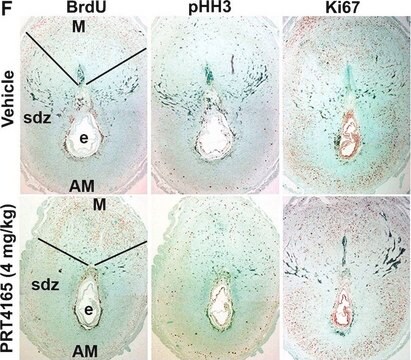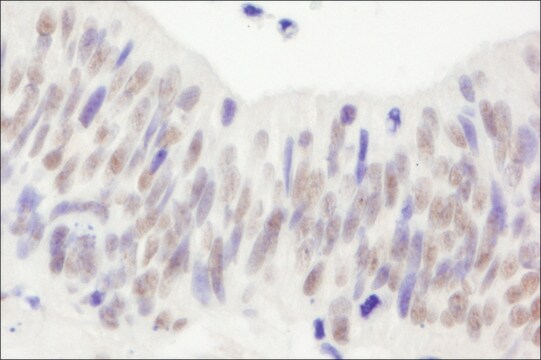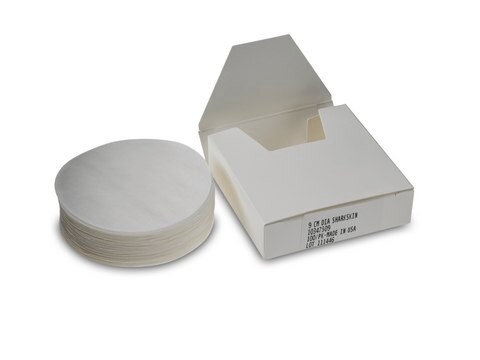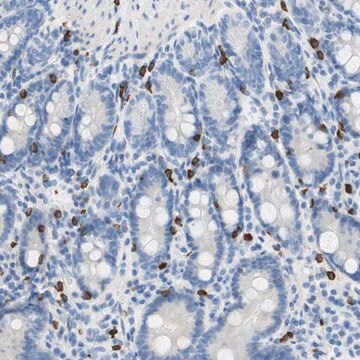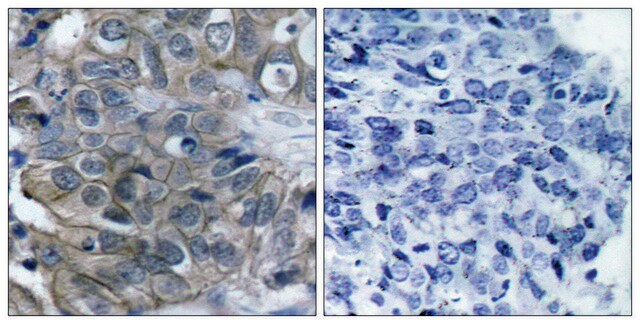05-616-C
Anti-Nibrin/Nbs1 Antibody, clone EE15 (Ascites Free)
clone EE15, from mouse
Synonyme(s) :
Nibrin, Cell cycle regulatory protein p95, Nijmegen breakage syndrome protein 1, p95 protein of the MRE11/RAD50 complex
About This Item
Produits recommandés
Source biologique
mouse
Niveau de qualité
Forme d'anticorps
purified antibody
Type de produit anticorps
primary antibodies
Clone
EE15, monoclonal
Espèces réactives
human
Ne doit pas réagir avec
mouse
Technique(s)
immunocytochemistry: suitable
immunoprecipitation (IP): suitable
western blot: suitable
Isotype
IgG1κ
Numéro d'accès NCBI
Numéro d'accès UniProt
Conditions d'expédition
wet ice
Modification post-traductionnelle de la cible
unmodified
Informations sur le gène
mouse ... Nbn(27354)
Description générale
Spécificité
Immunogène
Application
Western Blotting Analysis: A representative lot detected a shift of Nbs apparent molecular weight in lysates from gamma-irradiated human cells (U2OS, IMR90, HEK293, BJAB) (Wu, X., et al. (2000). Nature. 405(6785):477-482).
Immunocytochemistry Analysis: A representative lot detected NBS1-positive nuclear foci by fluorescent immunocytochemistry (Wu, X., et al. (2000). Nature. 289(5476):11).
Immunoprecipitation Analysis: 4 μg of this antibody immunoprecipitated Nibrin/Nbs1 from 500 μg of Jurkat RIPA lysate.
Epigenetics & Nuclear Function
Cell Cycle, DNA Replication & Repair
Qualité
Western Blotting Analysis: 1.0 µg/mL of this antibody detected Nibrin/Nbs1 in 10 µg of HeLa cell lysate.
Description de la cible
Liaison
Forme physique
Stockage et stabilité
Autres remarques
Clause de non-responsabilité
Not finding the right product?
Try our Outil de sélection de produits.
Code de la classe de stockage
12 - Non Combustible Liquids
Classe de danger pour l'eau (WGK)
WGK 1
Point d'éclair (°F)
Not applicable
Point d'éclair (°C)
Not applicable
Certificats d'analyse (COA)
Recherchez un Certificats d'analyse (COA) en saisissant le numéro de lot du produit. Les numéros de lot figurent sur l'étiquette du produit après les mots "Lot" ou "Batch".
Déjà en possession de ce produit ?
Retrouvez la documentation relative aux produits que vous avez récemment achetés dans la Bibliothèque de documents.
Notre équipe de scientifiques dispose d'une expérience dans tous les secteurs de la recherche, notamment en sciences de la vie, science des matériaux, synthèse chimique, chromatographie, analyse et dans de nombreux autres domaines..
Contacter notre Service technique

